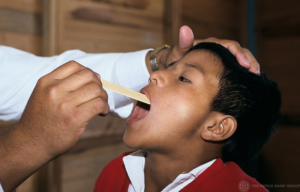Rare Diseases in Latin America
 Around 75% of rare diseases remain undiagnosed in Latin America. The region’s limited diagnosis of rare diseases largely stems from a lack of research, low medical practice registration and inadequate infant screening. There is also a connection between poverty and rare disease diagnosis in the region. Upper-middle-class citizens in Latin America have better access to quality health care and possess the financial capacity to consult numerous doctors and pay for treatments. On the other hand, a significant portion of Latin America’s population lives in poverty. Due to this high rate of poverty and expensive health care costs, rare diseases in Latin America often remain untreated and undiagnosed.
Around 75% of rare diseases remain undiagnosed in Latin America. The region’s limited diagnosis of rare diseases largely stems from a lack of research, low medical practice registration and inadequate infant screening. There is also a connection between poverty and rare disease diagnosis in the region. Upper-middle-class citizens in Latin America have better access to quality health care and possess the financial capacity to consult numerous doctors and pay for treatments. On the other hand, a significant portion of Latin America’s population lives in poverty. Due to this high rate of poverty and expensive health care costs, rare diseases in Latin America often remain untreated and undiagnosed.
Acknowledgment of Rare Diseases
The EU reports that rare diseases impact one in 2,000 individuals or fewer. Rare diseases affect around 350 million people across the globe, with rare diseases in Latin America accounting for approximately 50 million cases. The World Health Organization (WHO) has recorded 7,000 rare diseases, including Aarskog syndrome, Balo disease and Canavan disease.
Latin American countries, such as Venezuela and Cuba, have no legislation in place to prioritize research, diagnosis and treatment of rare diseases, according to the Wilson Center in 2022. Peru has basic rare disease legislation in place but only implemented it in 2011. In comparison, the U.S. passed its first rare disease legislation, the Orphan Drug Act, 28 years before in 1983.
The Impact of Poverty on Rare Disease Diagnosis
Rare diseases like trichuriasis and ancylostomiasis (hookworm infection) are prevalent in Latin America and mostly affect poor and rural areas. However, according to the Pan American Health Organization, in 2017, about 30% of people in the Americas could not access health care services due to economic constraints. As such, many rare diseases either remain untreated or result in financially crippling patient costs.
Many of Latin America’s governments often cannot afford to bear the cost of the drugs required to treat rare diseases. Without right-to-health litigation, legality that ensures governments sustain medical costs, impoverished persons suffer the complications and impacts of rare diseases in Latin America.
The 2022 Social Panorama of Latin America and the Caribbean concluded that around 201 million people in the region live in poverty and 82 million people experience extreme poverty. Therefore, almost a third of the population lives in a degree of poverty that restricts them from accessing medical provisions.
The Persons Living with a Rare Disease (PLWRD) Resolution
In December 2021, the U.N. adopted the first-ever U.N. Resolution on “Addressing the Challenges of Persons Living with a Rare Disease and their Families.” The Resolution pledges to acknowledge and “protect the human rights of all persons, including the estimated 300 million persons living with a rare disease worldwide.” The U.N. aims to draw attention to rare diseases by urging U.N. member states to improve their health care systems and provide services that are non-discriminatory and accessible to all income groups.
The U.N.’s 193 Member States embraced the PLWRD Resolution and Brazil stood as one of three countries originally advocating for the text. Brazil’s support of the agenda suggests recognition of the need to improve the treatment of rare diseases in Latin America. The U.N. hopes for the PLWRD agenda to be in full effect by no later than 2030 with the help of NGOs such as Rare Diseases International (RDI) and EURORDIS (Rare Diseases Europe).
Pharmaceutical Partnerships in Latin America
Pharmaceutical companies in Latin America are working together to improve access to life-saving treatments. HRA Pharma Rare Diseases and Celnova Pharma partnered in 2023 to increase the supply of medical drugs in Latin America. According to GlobalData’s drugs database, “only 5% of the globally marketed rare disease drugs are accessible in South and Central America.”
HRA RD and Celnova Pharma’s partnership will increase the availability of Metopirone and Lysodren to rare disease patients in Argentina, Chile and Peru. Metopirone treats Cushing’s syndrome and Lysoden treats adrenal cortical carcinoma, (ACC) both of which are rare diseases. In 2023, Argentina announced a 29.1% increase in government health spending, which will aid the dispersal of these drugs. An increased health budget allows for treatment subsidization and will help to provide medical care for Argentinians living in poverty.
Looking Ahead
Latin America’s struggle with rare disease diagnosis is systematic, and finding and implementing the appropriate solutions to this issue could take a while. However, pharmaceutical companies, the U.N. and NGOs are all working toward improving health care ethics and the treatment of rare diseases in Latin America and the world at large.
– Jennifer Preece
Photo: Flickr
